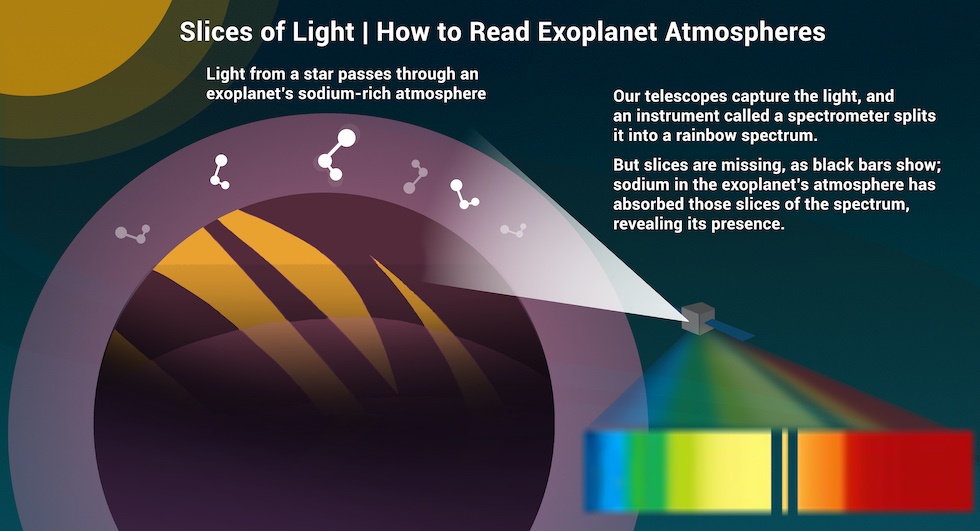Hubble Spots Crazy Atmosphere Changes On Exoplanet WASP-121 b Outside Solar System
8th Jan 2024
NASA’s Hubble Space Telescope has unveiled a cosmic spectacle, capturing the dynamic transformation of an exoplanet’s atmosphere over three years. Through meticulous observations and sophisticated computer models, astronomers have unearthed a tempestuous scene on Tylos, also known as WASP-121 b, a scorching Jupiter-sized planet.
What Do We Know About WASP-121 b Exoplanet?
Tylos, also referred to as WASP-121 b, stands as a scorching hot Jupiter-like exoplanet situated approximately 880 light-years away. This colossal world exists in a remarkably close orbit around its parent star, WASP-121, completing a full orbit in a mere 30 hours. Due to this proximity, Tylos remains tidally locked, presenting only one side to its star, resulting in extreme temperature differentials between its illuminated and darkened hemispheres.
With searing temperatures exceeding 3000 K on its sun-facing side, Tylos’ atmosphere brims with intriguing chemical reactions, offering a window into the complexities of exoplanetary weather dynamics and atmospheric compositions. Such studies not only deepen our understanding of these distant worlds but also play a crucial role in the ongoing search for potentially habitable exoplanets within the cosmos. While WASP-121 b is inhospitable, this discovery marks a pivotal stride in studying distant world weather patterns, potentially paving the way to identify habitable exoplanets boasting stable climates.
Hubble’s Observations & Discoveries
Decades of scrutiny of our solar system’s neighbouring planets have revealed their turbulent, ever-shifting atmospheres. Similarly, planets orbiting other stars are believed to exhibit such variability, necessitating extensive observations and computational analysis to fathom these changes.
An international cadre of astronomers meticulously collated and reprocessed Hubble’s observations of WASP-121 b from 2016, 2018, and 2019. Their findings divulge an atmosphere in flux, undergoing noticeable alterations over time. Advanced modelling techniques substantiate these dynamic variations as manifestations of weather phenomena within the exoplanet’s atmosphere.
The team uncovered substantial disparities between observations, showcasing the emergence and dissipation of colossal weather fronts, storms, and mammoth cyclones. These fluctuations stem from the stark temperature contrast between the star-facing side and the darker hemisphere of WASP-121 b. Intriguingly, they also detected an apparent misalignment between the exoplanet’s hottest region and its closest point to the star, alongside fluctuations in atmospheric chemical composition, deciphered via spectroscopy.
Jack Skinner, a co-leader of the study from the California Institute of Technology, says, “Our simulations vividly portray the weather dynamics on ultra-hot planets like WASP-121 b, signifying a substantial leap by combining observational constraints with atmospheric simulations.”
Quentin Changeat, a principal investigator from the European Space Agency, stated, “This breakthrough allows us to explore weather phenomena on exoplanets, a critical step in unravelling the complexities of their atmospheres and hunting for potentially habitable worlds.”
WASP-121 b, with an orbital period of merely 1.27 days due to its proximity to the parent star, remains tidally locked, akin to our Moon’s fixed orientation towards Earth. Daytime temperatures soaring to 3,450 degrees Fahrenheit typify the star-facing side.
Insights Through Temporal Analysis
Studying exoplanets and their atmospheres isn’t a one-time thing but a continuous process. Light from the host star traverses through these atmospheres, encountering specific chemicals that absorb distinct wavelengths. This absorption creates “dropouts” in the spectral analysis, offering scientists crucial insights into the atmospheric chemical composition and potential changes over time.
This study underscores the significance of “temporal resolution,” emphasizing the importance of multiple observations over extended periods. Similar methods have been applied to our gas giants, Neptune and Uranus, where initial glimpses from the Voyager 2 spacecraft revealed intriguing storms. Follow-up observations using instruments like Hubble and the Keck II telescopes enabled scientists to monitor these storms and other atmospheric fluctuations over extended periods, unveiling a deeper understanding of these planets’ dynamic atmospheres. This temporal approach proves invaluable in comprehending atmospheric changes.

Extending this methodology to distant exoplanets promises a wealth of insights into their atmospheric evolution. It holds the potential to detect certain chemical signatures hinting at the possibility of life. Continued long-term observations by telescopes like Hubble and the upcoming James Webb Space Telescope (JWST) will undoubtedly unravel more about the weather patterns on these distant worlds. Ultimately, these observations might unveil habitable worlds and shed light on the nature of life there, its duration, and its impact on the exoplanet itself.
![Beauty of the Pink Moon And Lyrid Meteor Shower in This Week’s Best Astrophotos [19-26 April] Beauty of the Pink Moon And Lyrid Meteor Shower in This Week’s Best Astrophotos [19-26 April]](https://orbitaltoday.com/wp-content/uploads/2024/04/Pink-Moon-is-on-its-way-above-the-mountains-1-300x300.jpg)





Thank you for your comment! It will be visible on the site after moderation.